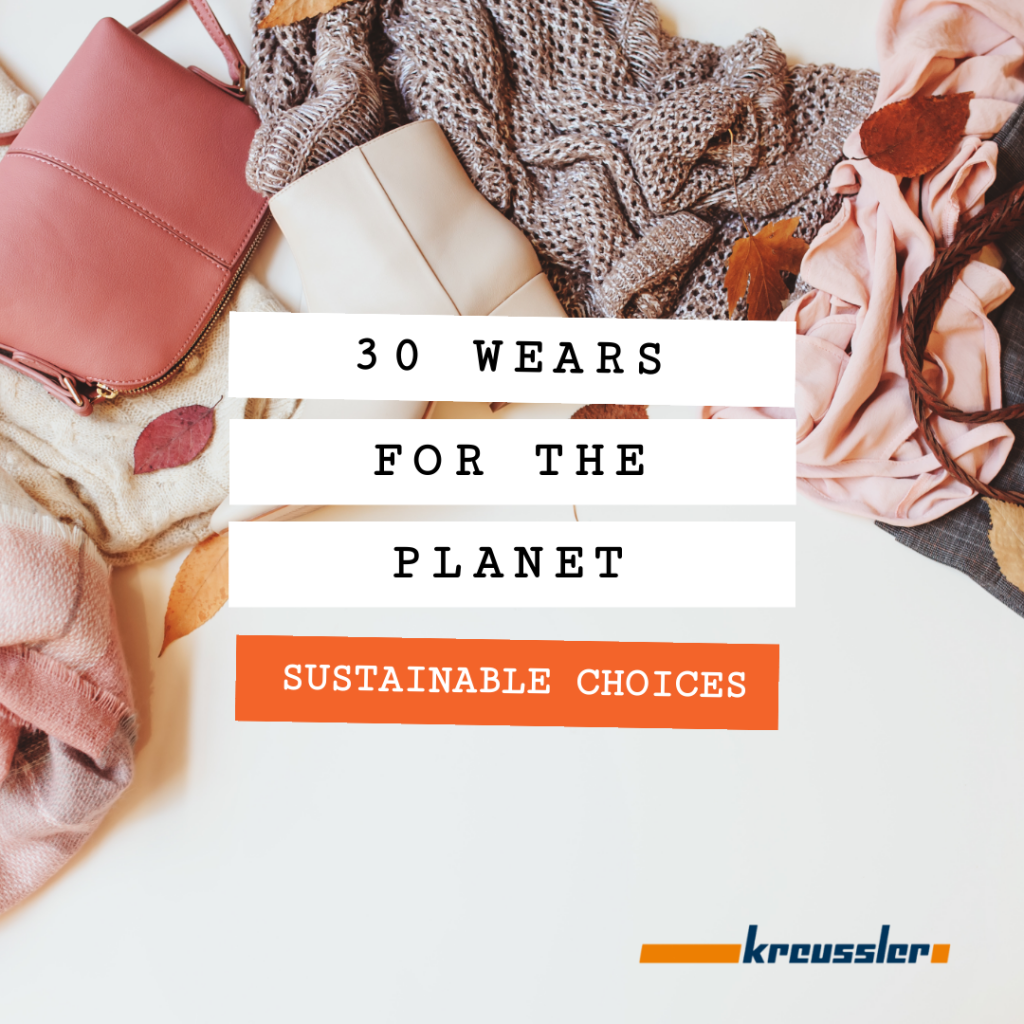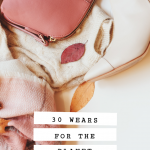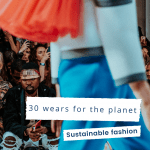There’s a movement to choose garments that will be worn for 30 wears. It’s the opposite of what is currently occurring with fast fashion and garments deemed “old” after three wears. Just three!
Started by Livia Firth, the founder of Eco Age (a company which certifies brands for their sustainability) and wife of Colin Firth, the #30Wears movement began to encourage us only to buy an item if we know that we’ll re-wear it.
Livi Firth told Harper’s Bazaar, “The biggest message is every time you buy something, always think, ‘Will I wear it a minimum of 30 times?’ If the answer is yes, then buy it. However, you’d be surprised how many times you say no.”
Vintage or consigned clothing can also be a sustainable fashion choice.
“Every new item of clothing made has a substantial carbon footprint attached to its manufacturing; but the amount of new energy needed to produce vintage clothing is zero,” Emma Watson said on her Press Tour Instagram account. “Vintage clothing has a huge role to play in making fashion more sustainable and reducing a global footprint that includes the 132m metric tons of coal used yearly through the production of new fibers, dyeing and bleaching of garments and the 6-9 trillion liters of water used by the industry.”
From The Ecologist, “In melding the ideas of the slow movement with the global clothing industry, we build a new vision for fashion in the era of sustainability: where pleasure and fashion is linked with awareness and responsibility.
Slow fashion is about choice, information, cultural diversity, and identity. Critically, it is also about balance. It requires a combination of rapid imaginative change and symbolic (fashion) expression as well as durability and long-term engaging, quality products. Slow fashion supports our psychological needs (to form an identity, communicate and be creative through our clothes) as well as our physical needs (to cover and protect us from extremes of climate).”
Tips to slow down your wardrobe:
• Donate clothing you’re no longer wearing
• Raid your mom or grandma’s closet for beautiful pieces that you can give a new life.
• Repair your clothes.
• Ask your dry cleaner about repair services.
• Find a seamstress to tailor and repair your garments.
• Regularly have your garments cleaned by a professional – wet cleaning is safe and sustainable while being gentle on garments for longer life.
• Wear vintage clothing.
If you don’t think you have the time or the money to make a difference with your clothing choices, think again. 30 wears for the planet is about sustainable clothing choices, and if you do some research, you can make better decisions. Try the 30 wears test next time you go shopping and live up to your promise to wear each piece thirty times.
Help spread the word by sharing this article with your friends and community. Together we can make a difference.



